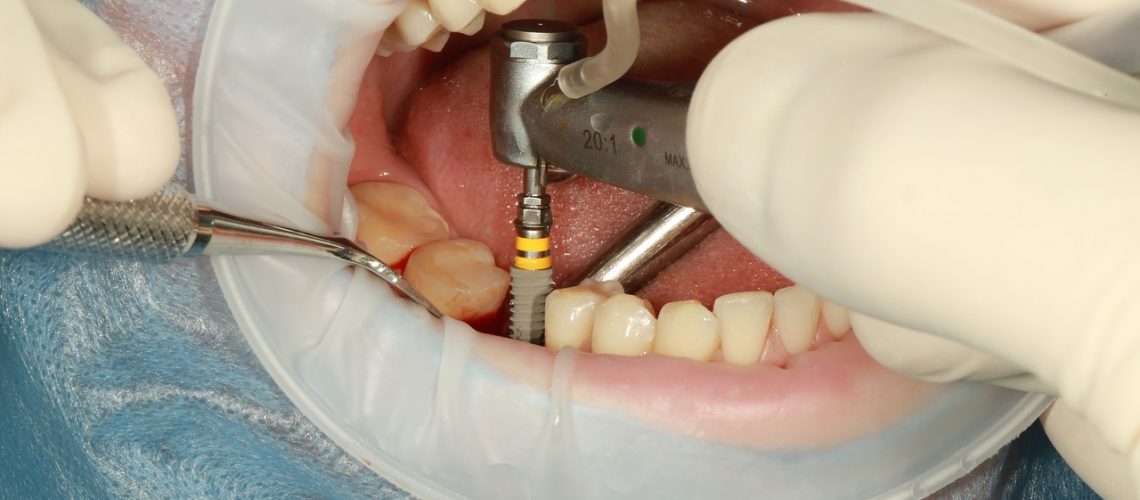The Single Strategy To Use For Dental Sense
The Single Strategy To Use For Dental Sense
Blog Article
Dental Sense Fundamentals Explained
Table of ContentsAn Unbiased View of Dental SenseAll about Dental SenseThe 9-Second Trick For Dental SenseNot known Facts About Dental Sense
are medical gadgets operatively implanted into the jaw to recover a person's ability to chew or their look. They supply assistance for artificial (phony) teeth, such as crowns, bridges, or dentures. When a tooth is shed due to injury or illness, an individual can experience issues such as rapid bone loss, faulty speech, or modifications to chewing patterns that result in pain.Dental implant systems consist of a dental implant body and oral implant joint and might also include a joint fixation screw. Kids dental. The dental implant body is surgically inserted in the jawbone in area of the tooth's root. The dental implant joint is typically attached to the implant body by the abutment fixation screw and expands via gum tissues right into the mouth to sustain the affixed fabricated teeth
(https://www.twitch.tv/dentalsense1/about)Framework of The Dental Implant System picking oral implants, speak with your oral supplier regarding the prospective benefits and dangers, and whether you are a prospect for the procedure. Points to take into consideration: Your total wellness is a crucial consider figuring out whether you are a good prospect for oral implants, for how long it will certainly take to recover, and how much time the implant may remain in location.
Smoking cigarettes may influence the healing process and reduce the long-lasting success of the dental implant. The healing process for the implant body might take numerous months or longer, throughout which time you commonly have a temporary joint instead of the tooth. the oral implant procedure: Carefully follow the oral health instructions offered to you by your dental supplier.
Get This Report on Dental Sense
Implant failure can cause the demand for one more medical treatment to deal with or change the implant system. Restores the capacity to eat Recovers aesthetic appearance Helps keep the jawbone from shrinking as a result of bone loss Preserves the wellness of the bordering bone and periodontals Assists maintain surrounding (neighboring) teeth stable Boosts lifestyle Damage to surrounding natural teeth during dental implant placement Injury to the surrounding tissues during surgical treatment, such as sinus opening Injury throughout surgical treatment (for example, crack of surrounding jawbone) Insufficient feature, such as feeling like the teeth do not bite with each other usually A feeling that the tooth is loose or turning in position arising from a joint screw loosening up Implant body failing (looseness of the implant body) because of systemic infection, which might be more probable in clients with unchecked diabetes because of regional infection in bone and periodontals supporting the dental implant body as a result of postponed recovery, which might be more probable in people who smoke Problem cleaning up the gum tissues around the implant, causing bad dental hygiene Neglected periodontal illness Post-surgical feeling numb due to nerve impingement or damage Constantly alert healthcare providers and imaging service technicians that you have oral implants prior to any kind of magnetic vibration imaging (MRI) or x-ray procedures.
FDA is not mindful of any kind of negative occasions reported for MRI or x-ray treatments with dental implants. Dental implants systems are typically made of products that comply with global consensus criteria of the International Organization for Standardization (ISO) or ASTM International. These standards have details of what makes a safe material.

A dental implant is a framework that replaces a missing tooth. With screw-like gadgets, the cosmetic surgeon inserts an implant into the jawbone, and it acts as an anchor for a synthetic tooth, called a crown.
Unknown Facts About Dental Sense
Some people are not eligible for oral implant surgical procedure. It is for dental doctors to operate on people with: intense illnessuncontrollable metabolic diseasebone or soft cells condition or infectionIf these problems are fixed, a person can have the surgery. In, dental surgeons abstain from operating on people with: If people with any one of the above undergo oral implant surgical procedure, there is a greater threat of the implant stopping working.

Oral implant surgical treatment is a personalized procedure. It's not the same for every person. The complying with provides a basic review of what you can anticipate your dental professional, oral cosmetic surgeon, periodontist or prosthodontist to do: Put the dental implant operatively. Offer you time to recover. Affix the blog post and last crown, bridge or denture.
Next, your surgeon will carefully position the dental implant right into your jaw. Your surgeon will certainly reposition your gum tissues and shut the incision with stitches. If your dental implant is near the front of your mouth, your dental expert will make a short-lived tooth for you to wear until you recover. This way, you won't have a gap in your smile while you recover.
The Greatest Guide To Dental Sense
During the healing stage, your jawbone must fuse to the dental implant. This procedure can take anywhere from 3 to 9 months.
When your dental implant heals, your dental practitioner can affix the abutment (tiny adapter post) and your last reconstruction (crown, bridge or denture). This typically takes regarding one hour to complete and may need a second small surgical treatment. You should not feel any discomfort throughout your dental implant treatment since your service provider will certainly use medicine to numb your gum tissues.
Report this page